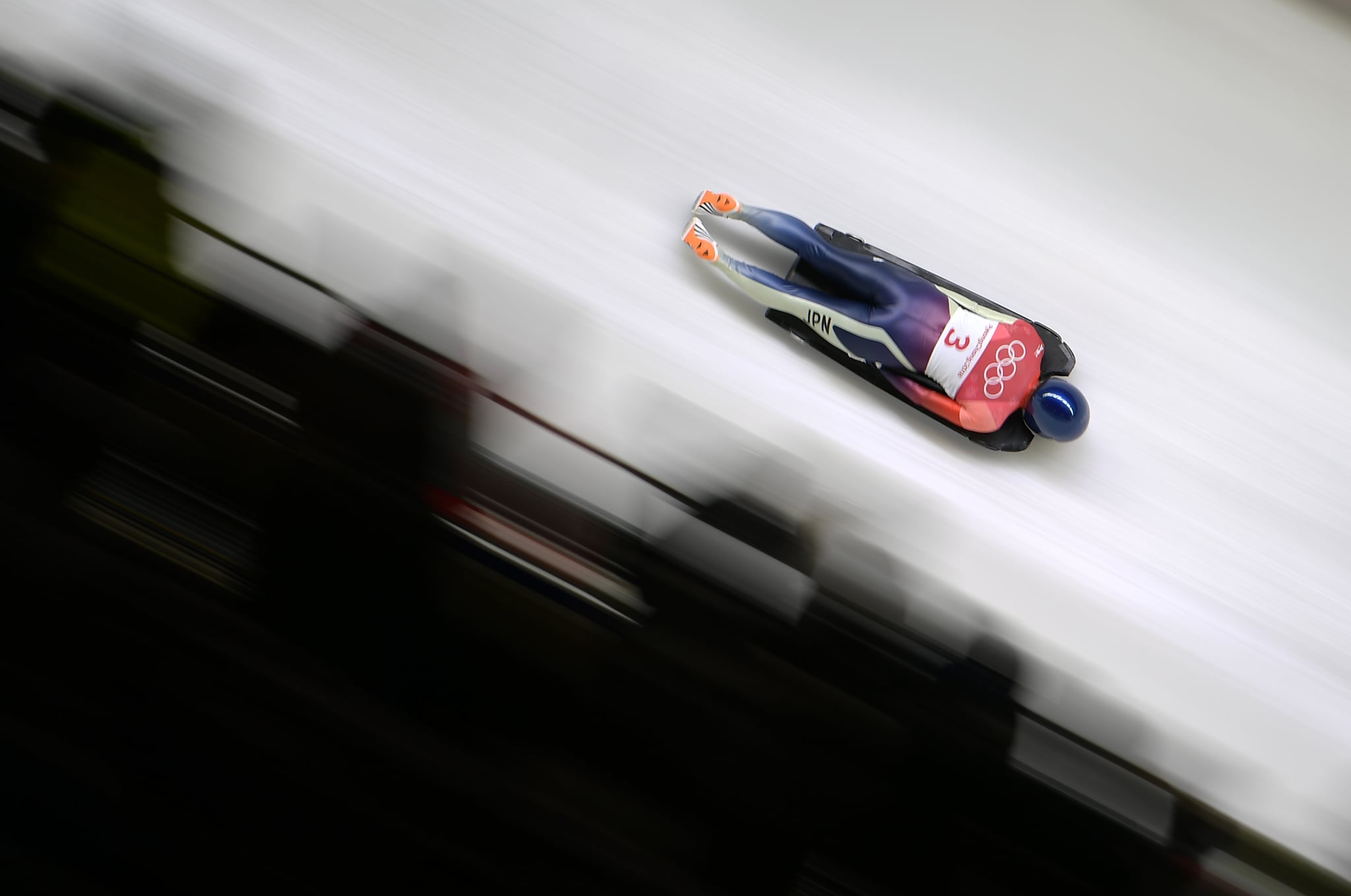Products You May Like
To an amateur’s eye, skeleton and luge may just seem like extreme forms of sledding, but these two Winter Olympics sports are far more dangerous than the latter. And, while luge and skeleton may seem similar to each other, they’re actually vastly different events. Sure, both sports involve athletes racing down steep ice tracks at rocket speed, but the similarities end there. In fact, you can easily spot the difference between the two events at the 2022 Winter Olympics simply by looking at the athletes’ starting position and the way they position their bodies on the sled.
In luge, athletes take their mark in a seated position and push against the ice with their hands to launch themselves forward. For the remainder of the race, competitors sled down the course on their backs, feet first. On the flip side, skeleton athletes take their mark from a standing position and run in an all-out sprint for almost 40 meters before hurling their bodies stomach down, head-first onto the sled. But that’s not the only thing that sets these sports apart.
How Do Luge and Skeleton Sleds Differ?
For luge, sleds consist of two razor-sharp blades — commonly referred to as “runners” — with attached steels that are held together by two bridges. The runners and steels are the most pivotal pieces of the sled because athletes use those to dictate which way the sled is going to move. On average, sleds weigh between 46.3 and 66.1 pounds, depending on whether they’re built for single rider or a pair.
Skeleton sleds are a little more complex. In addition to runners, these sleds have an aerodynamic glass-fiber-covered chassis, which is situated underneath the saddle, and front and back bumpers for extra protection. Men’s sleds weigh no more than 94.8 pounds and women’s sleds weigh a maximum 77.2 pounds.
Both sleds are not equipped with steering or breaking assistance. For this reason, helmets with face shields are required. To help with grip and movement, all athletes are allowed to wear spiked equipment, but the type of equipment varies per sport. Spiked gloves are worn in luge, while skeleton athletes wear spiked shoes with a minimum of 250 spikes.
Which Is Faster: Luge or Skeleton?
In two sports where having the fastest time means win a gold medal, skeleton athletes clock speeds of 80 mph or higher, while lugers can travel up to 90 mph. When dealing with this amount of force and speed, every second of an athlete’s run counts. A sluggish start or a mishandled turn could mean missing the podium. It’s just one more reason luge and skeleton will be two of the most-anticipated events at the 2022 Winter Olympics, which kick off on Feb. 4.
